VENTURE THROUGH VIETNAM
By Dustin O’Regan
Entrance to Sofitel Legend Metropole Hanoi
By Dustin O’Regan
Entrance to Sofitel Legend Metropole Hanoi
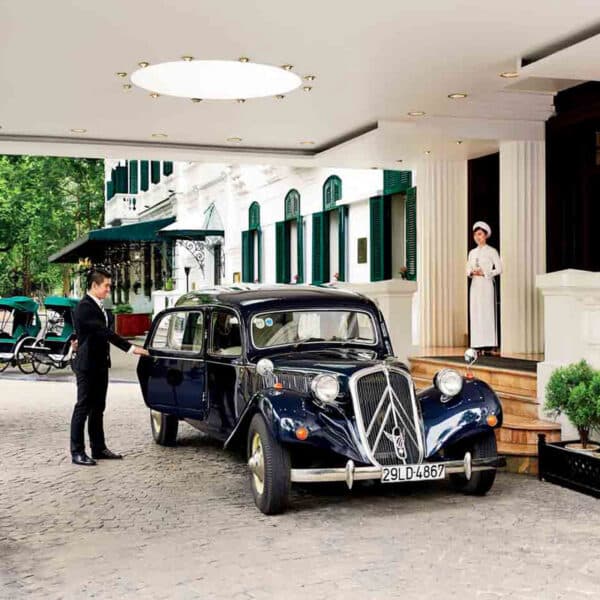
My daughter and I started our Vietnamese sojourn in Hoi An, a city on the banks of the poetic Thu Bon River on Vietnam’s south-central coast. Once a major port city, Hoi An has a long history beginning more than 2,000 years ago. The town grew from a small trading post to an international trading center but in the 18th century ceded dominance to the neighboring Da Nang. The city’s diverse historical influences are reflected in its architecture—a mix of eras and styles from wooden Chinese temples and colorful French colonial buildings to slender Vietnamese tube houses and the iconic Japanese Covered Bridge (Chùa Cầu).
We stayed at the Anantara Hoi An Resort located just at the edge of the historic district allowing us convenient access to the vibrant downtown. Set amidst lush gardens, the riverfront resort is home to several restaurants including two of my favorites: Hoi An Riverside, a charming French colonial-style dining room serving the very best of Vietnamese cuisine as well as seafood and steaks; and Art Space, a trendy streetside venue offering an innovative menu of modern East and West cuisine enjoyed alongside seasonal pop-up art installations.
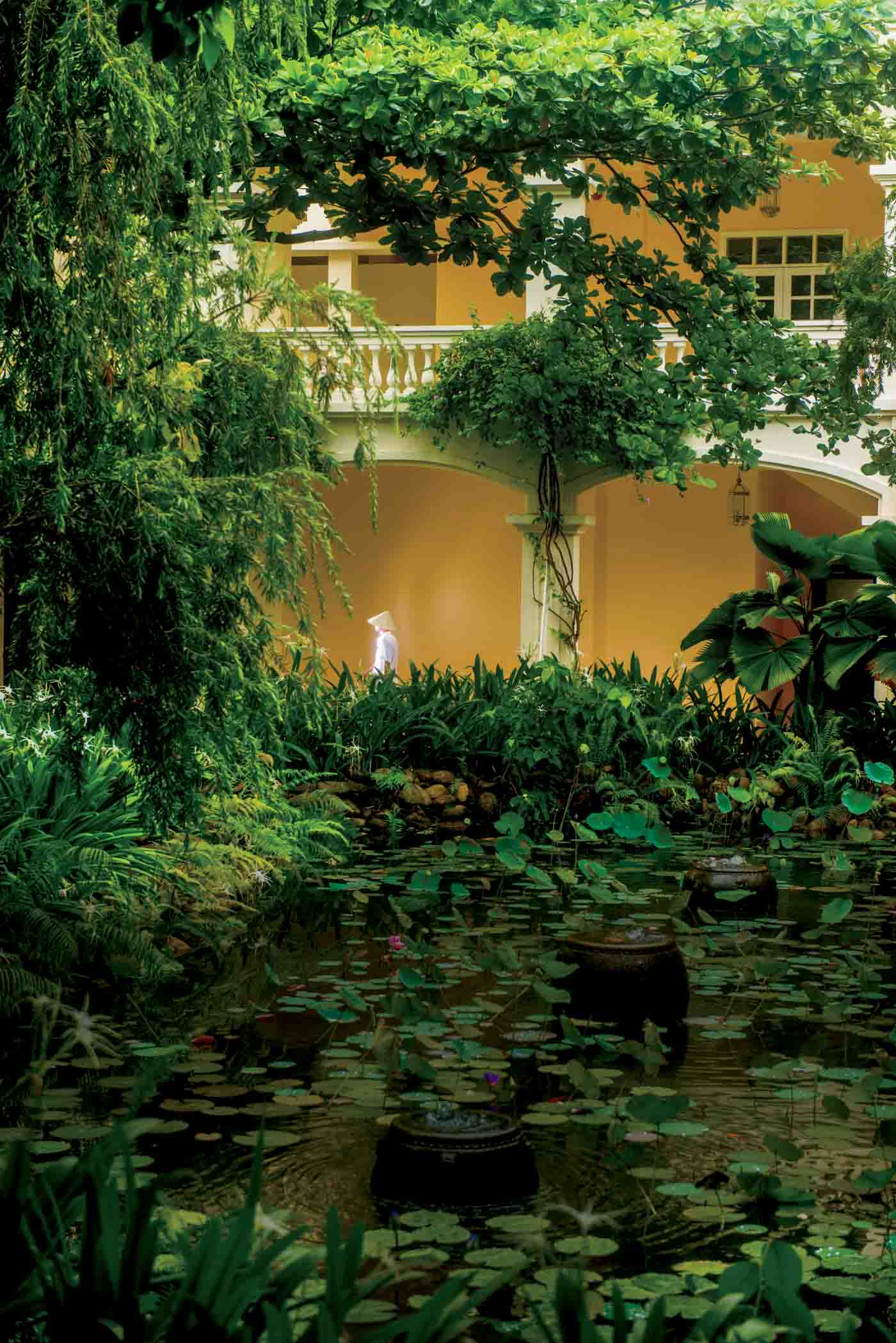
We spent our days immersed in local culture weaving in and out of quaint cafes and eclectic shops, which offered everything from Vietnamese coffee to lanterns and, of all things, colorful cowboy boots. One evening, guided by Huynh Huu Phuoc from Eat Hoi An/Street Food Tours (eathoian.com), we enjoyed an immersive experience that allowed us to really “see” and “taste” the essence of Hoi An. We explored the back streets of Hoi An, popping into dozens of back-alley eateries and local hot spots to sample blood porridge, various noodle dishes, chicken feet, snails, and even avocado ice cream. It was so interesting to meet each proprietor and learn about their journeys. One woman had set up a tent-like structure on a sidewalk next to a tree she believed would bring luck—it appears that it did as she is still operating 30 years later.
The narrow cobblestone streets of Hoi An’s renowned “Ancient Town,” a UNESCO World Heritage Site, are lined with centuries- old buildings with moody yellow facades covered by vibrant bougainvillea. Flowing gently through the heart of Hoi An, the Thu Bon River reflects the town’s picturesque charm. Traditional wooden boats adorned with colorful lanterns ferry visitors along the river, serving as a reminder of the town’s rich maritime heritage, while the riverbanks bustle with activity from storefronts and lively markets. At night, Ancient Town transforms into a brightly lit wonderland illuminated by thousands of colorful silk lanterns and small candle-lit wish boxes dance on the water’s surface. The sounds of traditional Vietnamese music and live bands drifted from riverside cafes, mingling with the laughter and chatter of locals and visitors alike.
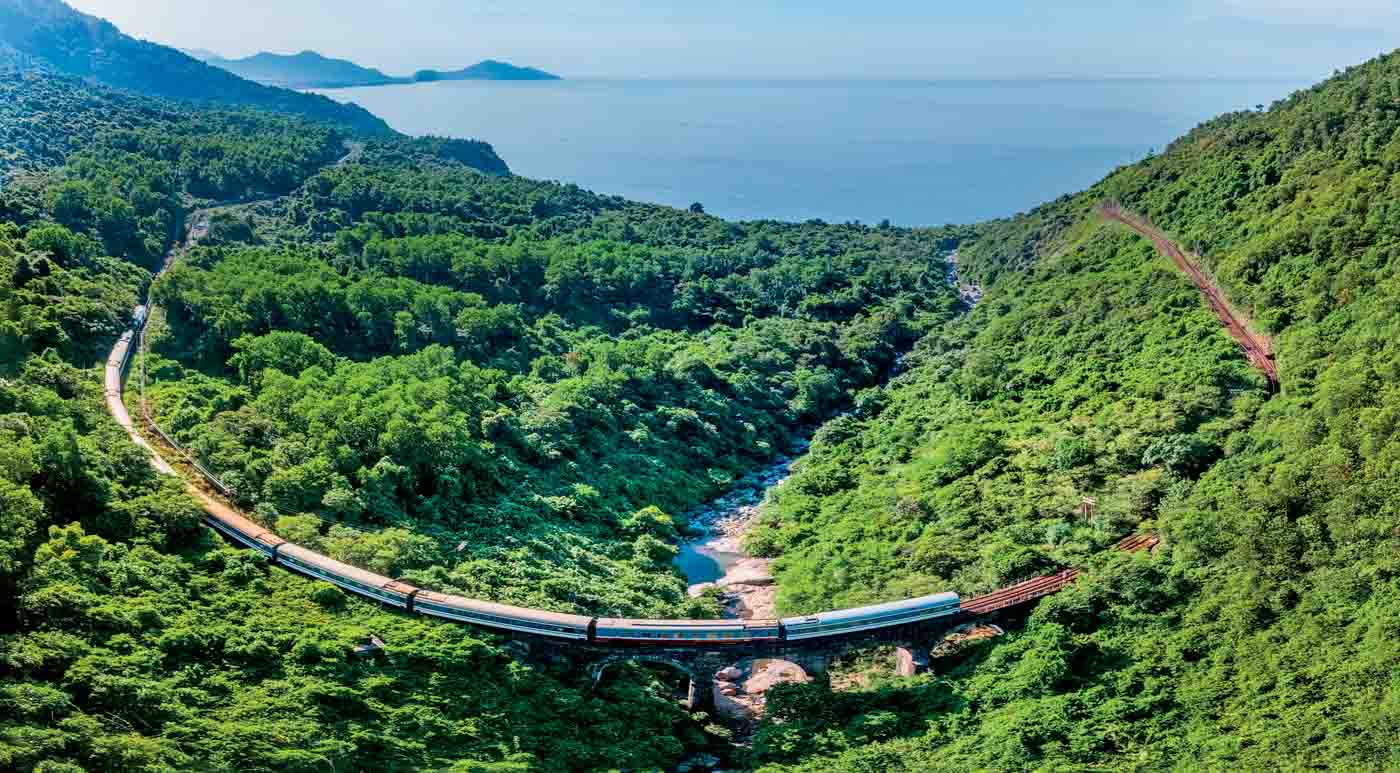
For our trip to the modern coastal resort in Quy Nhon, we opted for a unique travel experience offered by Anantara—The Vietage. This luxurious 12-seat first-class train car carries passengers between Hoi An and the coast. Departing from Da Nang, just a short car ride from the resort, we embarked on a leisurely sixhour rail journey through the Vietnamese countryside. Along the way, we feasted on an exquisite three-course meal while sipping free-flowing cocktails and received a mini massage. This elegant mode of travel afforded us glimpses of emerald green rice paddies, quaint villages, farmers donning nón lá (traditional conical hats) while working their fields, distant mountains, lush jungles, and historic cemeteries full of brightly colored and elaborately festooned tombs. As we approached Quy Nhon, we caught sight of the Banh It Towers—architectural marvels dating back to the end of the 11th century, perched high on a hill. The Vietage revives the romance of rail travel and offers a luxurious way to explore Vietnam’s countryside.
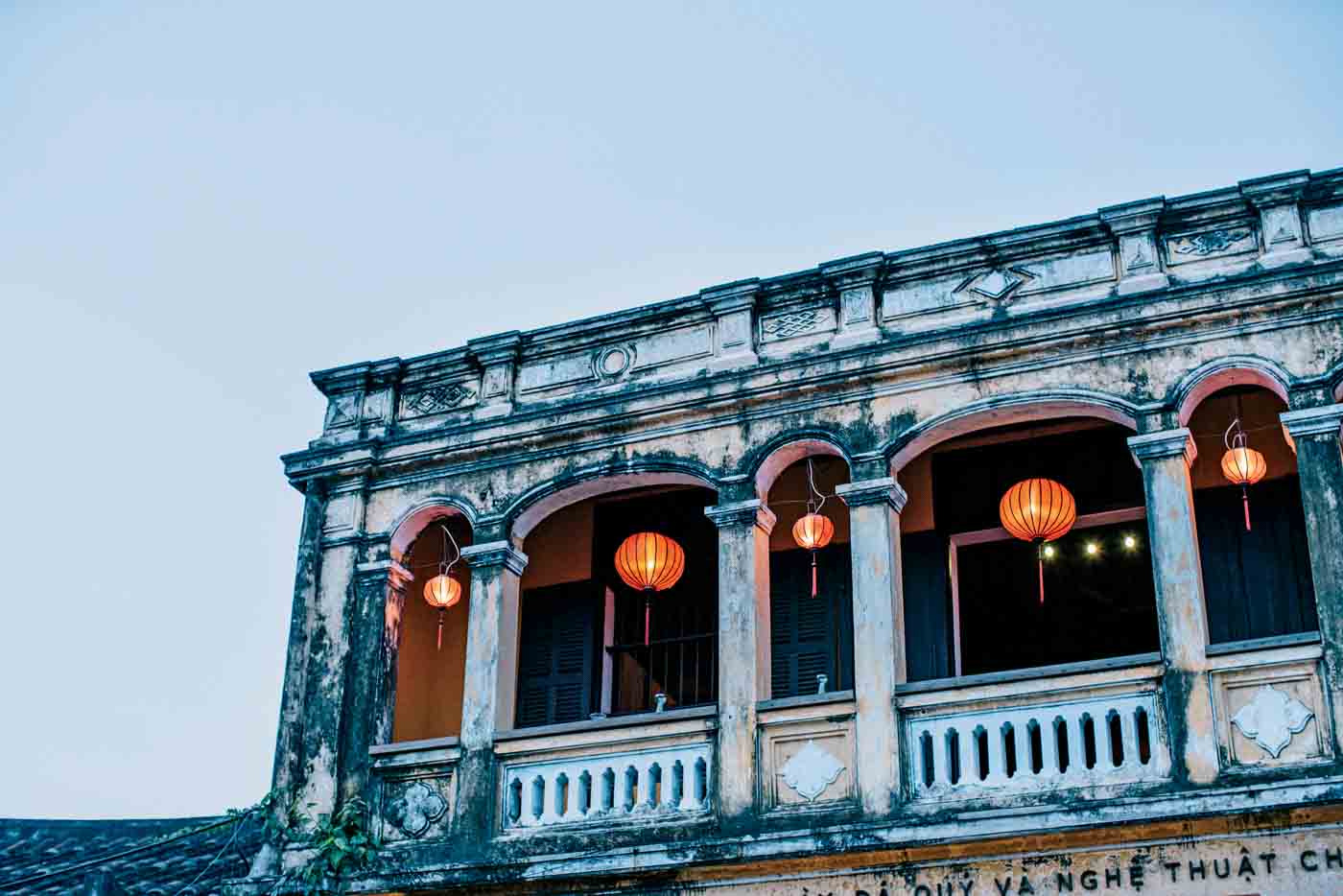
Along the sandy shores of downtown Quy Nhon, bars and restaurants buzz with volleyball games, sunbathers, swimmers, and cyclists. For our short 30-minute drive from Quy Nhon to the Anantara Quy Nhon Villas, we followed a winding coastal road. The coastline views were magnificent—dramatic cliffs overlooked stunning beaches, and the cerulean sea was peppered with rugged rock islands wearing crowns of green. Traditional brightly painted wood boats, unchanged in design over the centuries, bobbed gently in the sea, their nets glistening with the morning’s catch.
Arriving at the Anantara Quy Nhon Villas, we discovered a serene retreat of 25 luxury pool villas spread across 7 acres of lush landscape fronting Quy Nhon Bay. Our seaside villa sported a private infinity pool, an outdoor garden with a marble shower, an immense indoor bathroom, and beautifully appointed living quarters with views of the turquoise sea, islands, and powdery white beach.
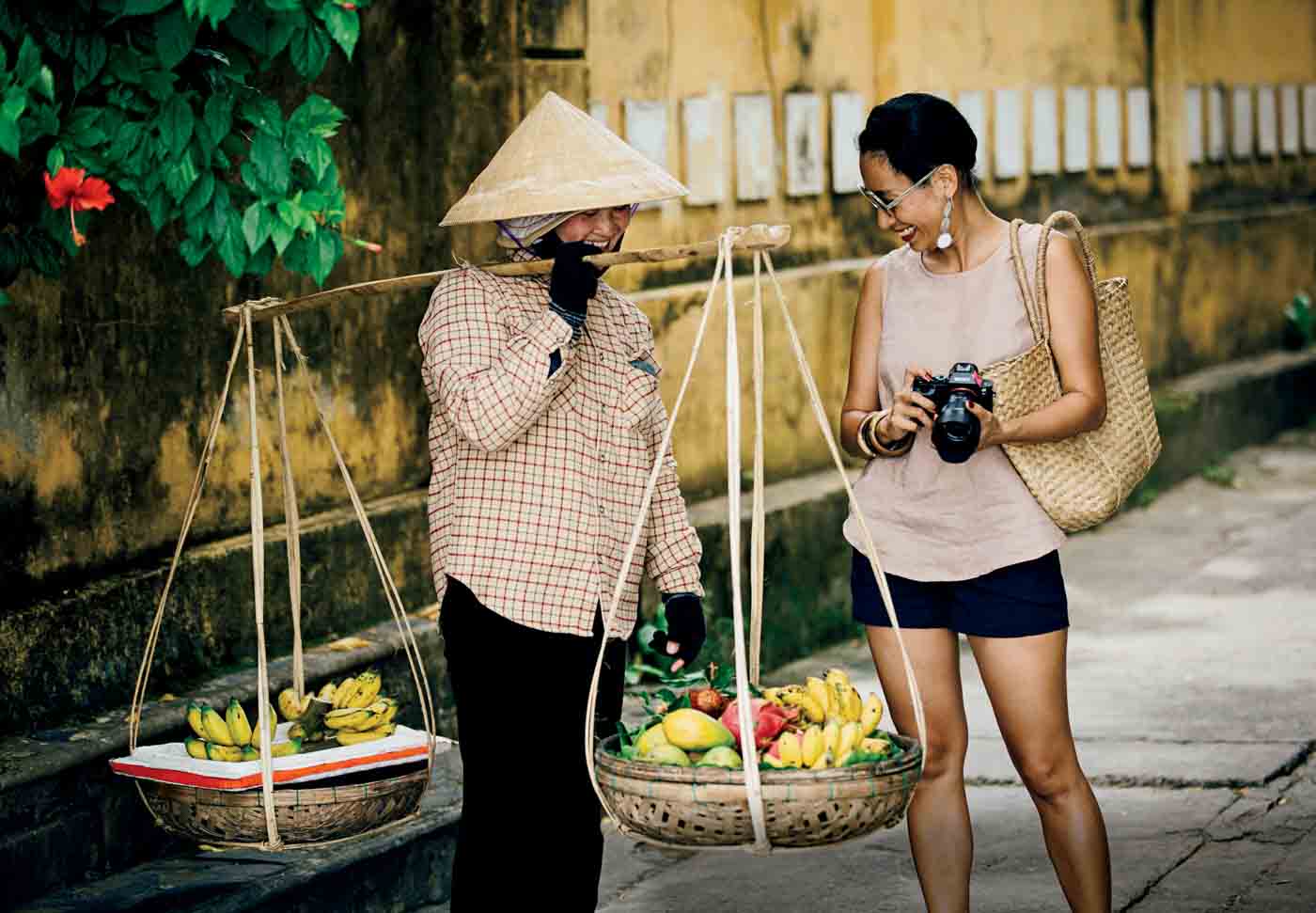
Vietnam is a food destination, so our stay revolved heavily around exploring local cuisine. Memorable events included the Chef ’s Table Experience, a personalized culinary delight with a four-course extravaganza and excellent wine pairings, and a Spice Spoons adventure that took us from Quy Nhon’s local market to the kitchen of the resort’s centrally located Sea.Fire.Salt restaurant.
Led by Executive Chef Vĩnh Trần, the Spice Spoons adventure began at Quy Nhon’s energetic Dam Market. Located in the heart of the city, the Dam Market is a vibrant montage of colors, sounds, and scents. Stalls brim with fresh produce, fragrant herbs, live animals, and exotic spices while the friendly smiles of vendors add warmth to the chaotic atmosphere. With Chef Trần’s guidance, we learned how to select the freshest fish and the most aromatic herbs. Returning to the resort with overflowing shopping bags, we channeled our inner Master Chef as we chopped, fried, grilled, flipped, and buttered. The hard work culminated in a feast with a sea grape/tomato/red onion salad; razor clams with red peppers, garlic, shallot, and oyster sauce (my daughter’s new favorite delicacy); fish stew with pork belly and pickled vegetables; and grilled clams with spiced oil and fried shallot. Satisfied with our culinary prowess, we spent the afternoon lolling on the beach, swimming in the sea, and soaking up the breathtaking view.
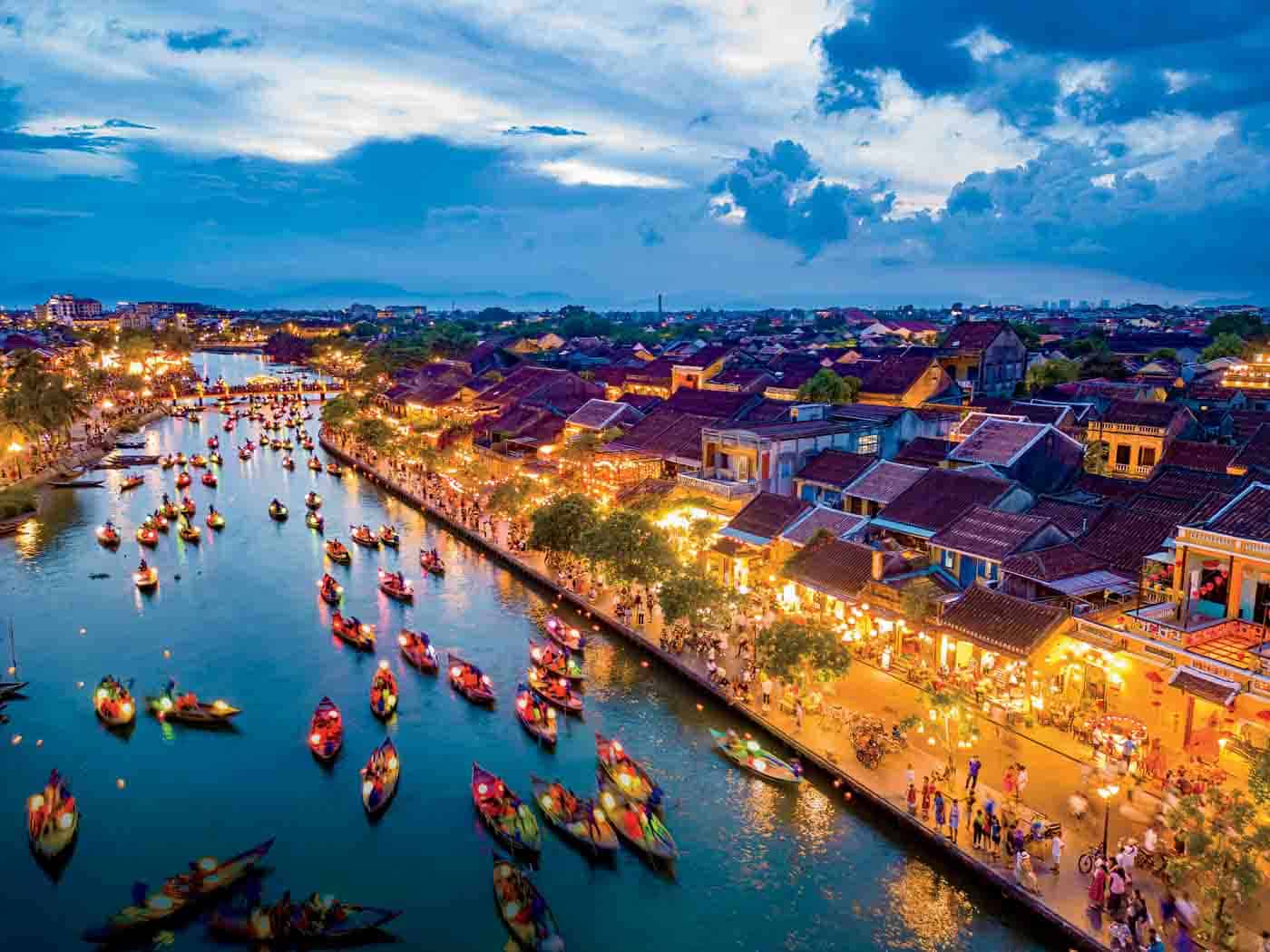
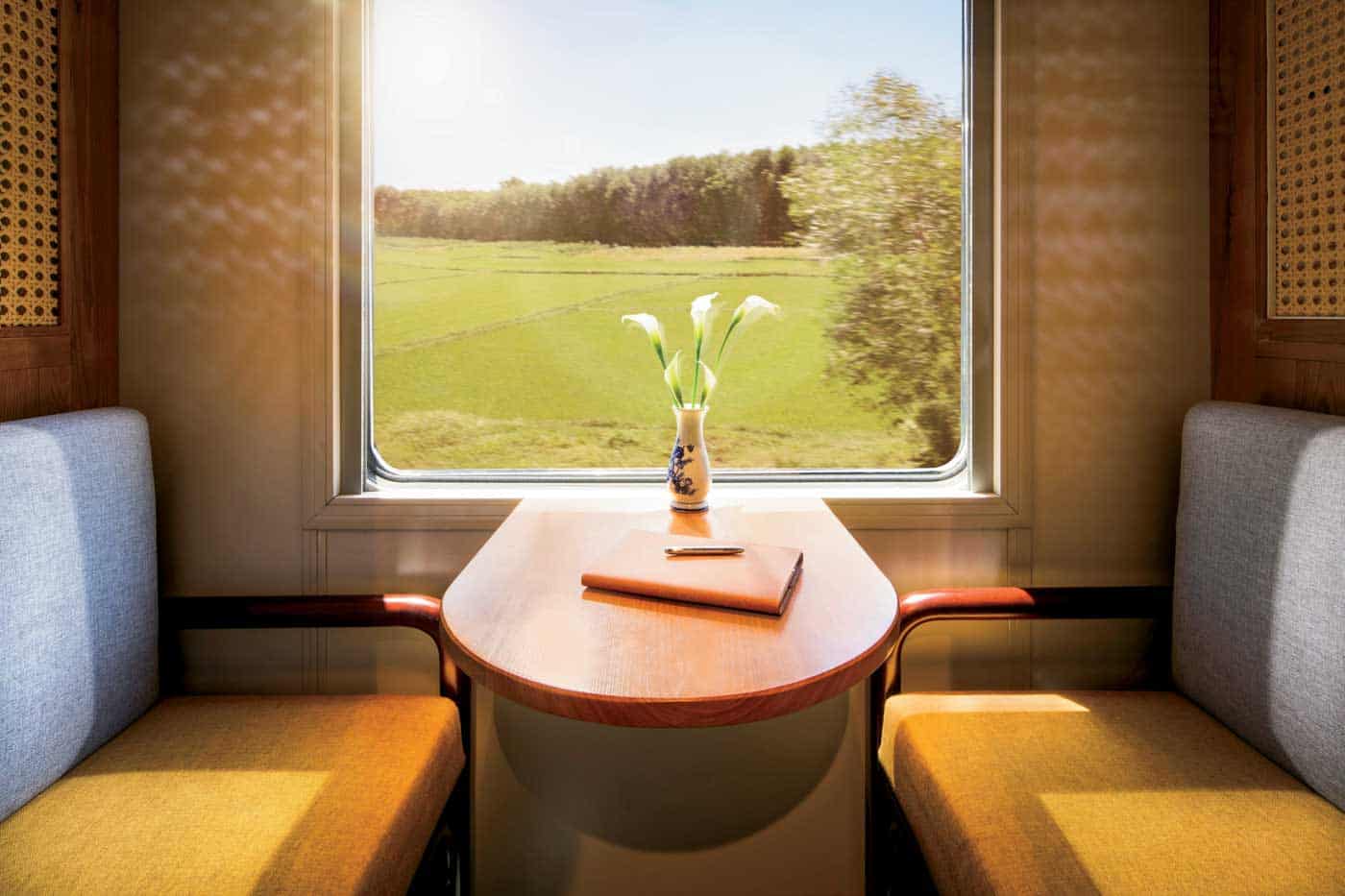
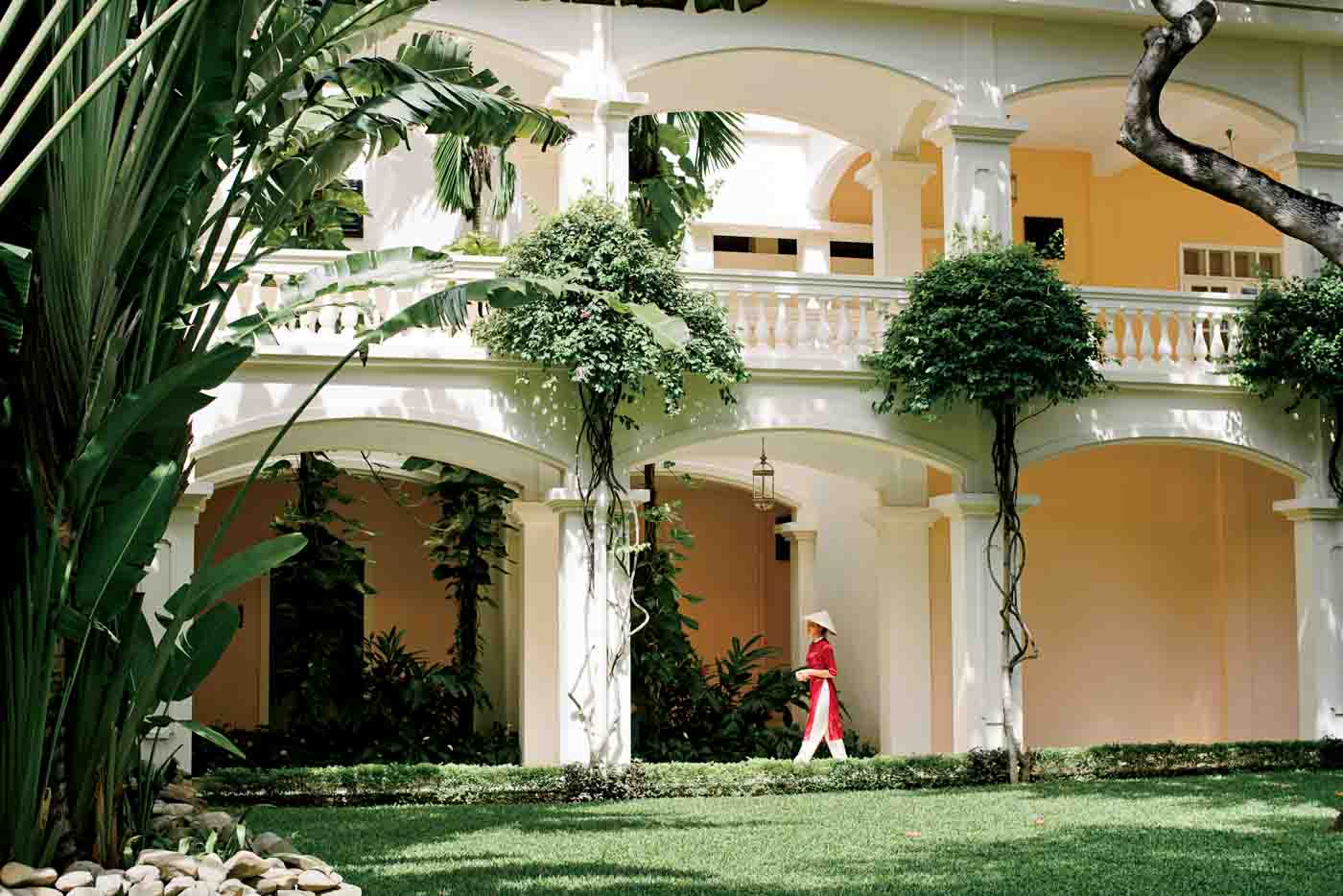
Delving into local history, we booked a private tour with Thich Tours (quynhonprivatetours.com) to explore Quy Nhon’s monasteries, the Quang Trung Museum, and ancient Cham towers, including Duong Long Champa—the tallest brick towers in Southeast Asia. The ancient Kingdom of Champa, a significant maritime power, flourished along the central coast from approximately the 2nd to the 19th centuries. Thich, our knowledgeable guide, shared the thousand-year history of the Champa civilization as we climbed (and climbed) the stairs toward the hilltop Banh It Towers. Thich then introduced us to a local restaurant Nem Chợ Huyện Olala for a hands-on lesson in making Vietnamese spring rolls—a fun “taste” of local culture.
One morning we traded historical and culinary adventures for a session of Viet Vo Dao Martial Arts led by Master Phuc. This form of self-defense martial arts is Vietnam’s most popular. Donning our traditional võ phục uniform, we learned the art of using our arms, elbows, legs, and knees in counterattack moves. Attackers beware!
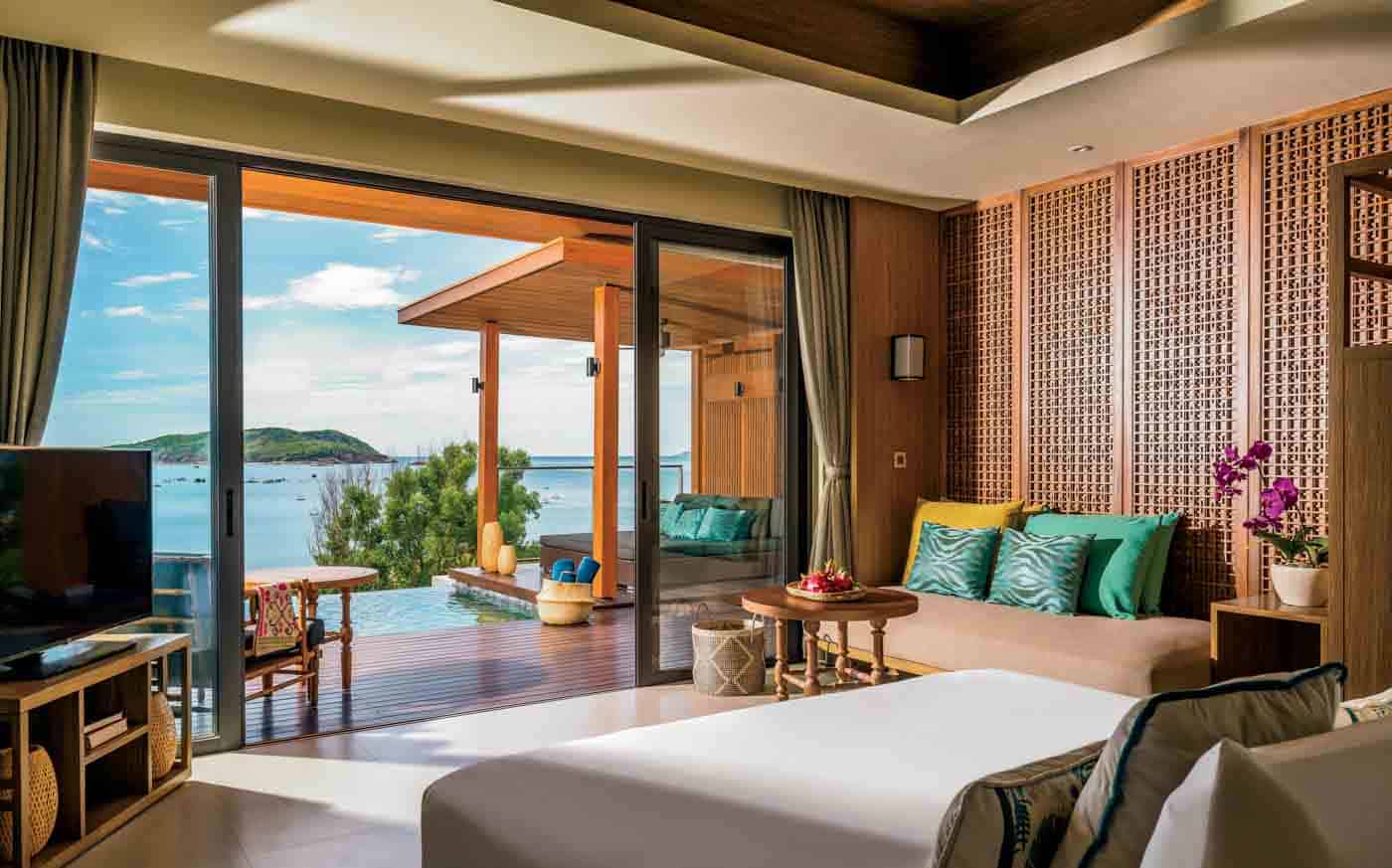
After our invigorating morning, we retreated to the spa. A golf cart whisked us into the jungle stopping at a footpath. Following a stone walkway deeper into the jungle, we came upon an open-air pavilion. We entered the peaceful space and followed the attendants to an immense room resembling a glass treehouse. After a foot cleansing ritual with a bath of saltwater infused with rose petals, we both opted for the Four Hands Flow Vietnamese massage—a harmonious combination of two experienced local experts using traditional Vietnamese massage techniques to reach deep into the muscles. When the attendants started a fingertip dance along my temples and the nape of my neck, I sighed wistfully knowing this idyllic encounter was about to end.
Every experience, from culinary adventure to cultural exploration to spa indulgences enriched our stay in Quy Nhon. We bid farewell to our glorious beachside retreat and headed to Vietnam’s capital city.
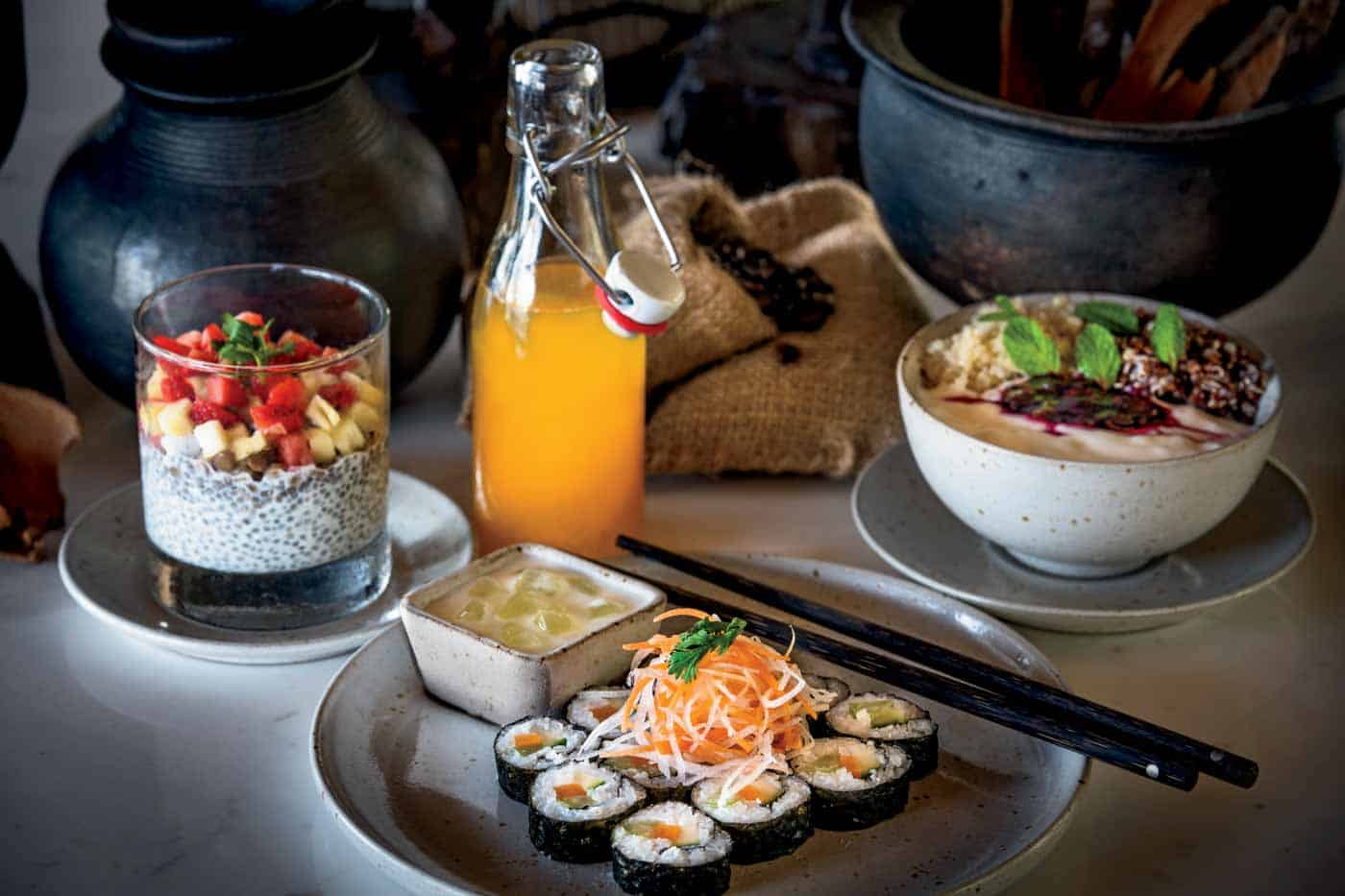
Before our journey home, we decided to spend two days in Hanoi, celebrated for its centuries-old architecture and a rich culture with Southeast Asian, Chinese, and French influences. For our stay, we chose a French Quarter landmark that exudes an illustrious history—the award-winning French colonial-style Sofitel Legend Metropole Hanoi. Boasting a classical white façade, green shutters, original wrought iron detail, and a lush courtyard garden, the hotel blends colonial heritage with neo-classical luxury and a dash of modernity. The 123-year-old hotel is legendary, a bastion of sheer opulence and refinement making it an ideal base for history-minded travelers. Since 1901, nearly every major political, social, and economic event shaping Hanoi has been part of the hotel’s history.
Upon entry, we were welcomed by three staff members dressed in traditional Vietnamese fashions who whisked our bags away and ushered us to check-in. We were welcomed with a cool drink, presented with heavy leather-bound folders to review our booking, and then guided to our suite in the recently refurbished colonial Metropole Wing. The room’s Indo-Chinese décor was highlighted by a black lacquer closet that opened to reveal a glorious orange-hued interior reminiscent of Hermes’ signature color. Relaxing on the terrace, we admired the lush courtyard with its pool and Bamboo Bar.
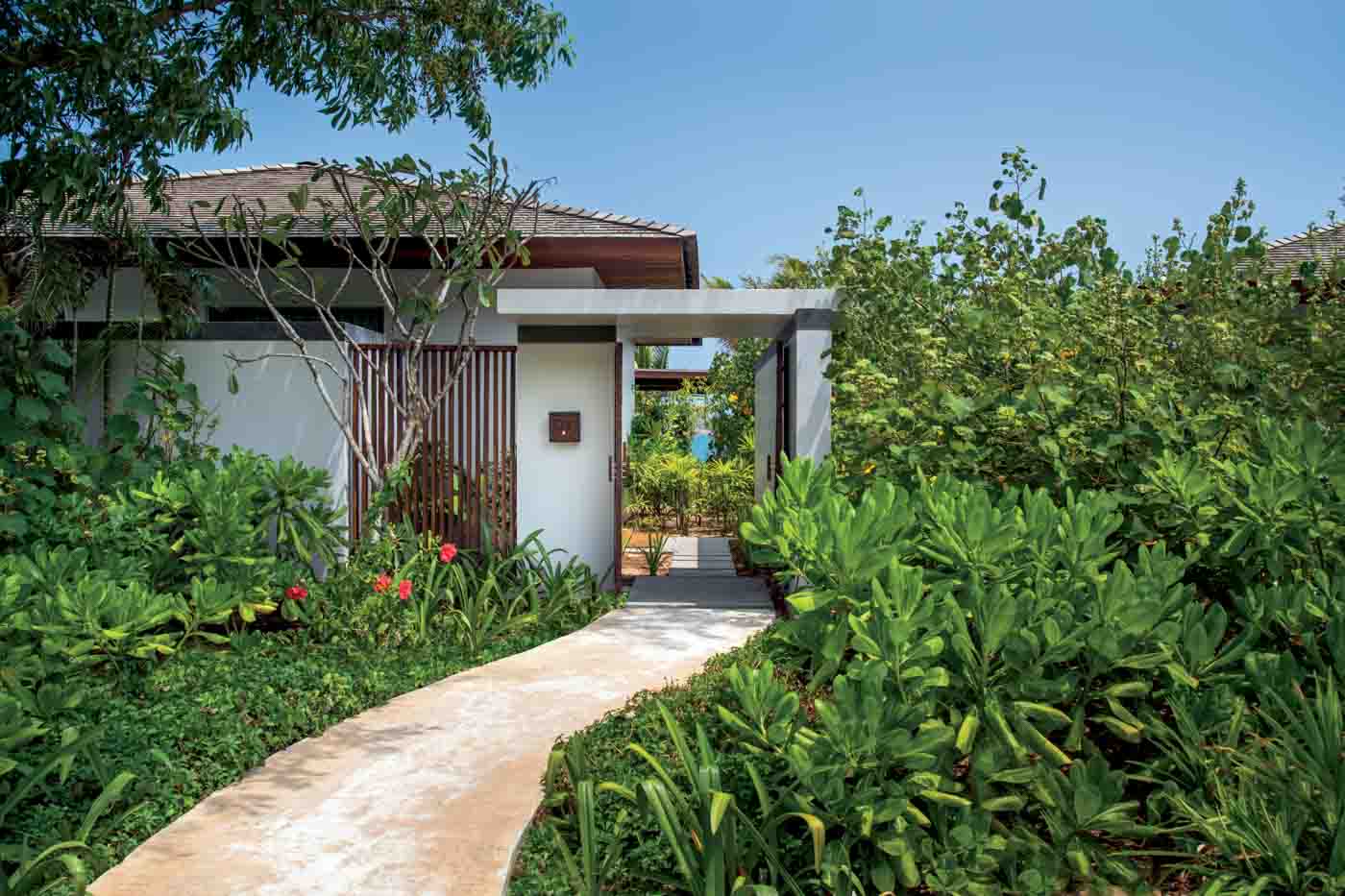
After a deep sleep in sumptuous bedding, we awoke refreshed and reinvigorated. At Le Club, we savored an elaborate buffet of fresh seafood on ice, foie gras, lobster bisque, Serrano ham, omelets, noodle dishes, and pastries—all enjoyed while seated in a glass-enclosed atrium with views of the tropical courtyard. Le Club also offers a lovely afternoon tea service, where we spent hours sampling delicate tea sandwiches, elegant desserts, French press coffee, and an assortment of teas.
In the late afternoon, we explored the city on foot. Hanoi was much greener than I expected—rice paddies line the highways while trees border every street. A short walk from the hotel, we came upon Hoàn Kiếm Lake, also known as “Sword Lake,” which has an ancient temple floating at its center. We walked the lakeside pathway where flowering trees shaded us from the heat and gardens burst from sidewalk planters. We immersed ourselves in the charm of the Old Quarter where narrow main streets bear the names of ancient trades—including Silver Street, Salt Street, Coffin Street, and Cotton Street. Walking back to the hotel, we strolled past elegant boutiques and the opulent Opera House (Nhà hát Lớn Hà Nội). The stunning architectural gem was inspired by Paris’ Palais Garnier and was completed after a decade of construction beginning in 1901.
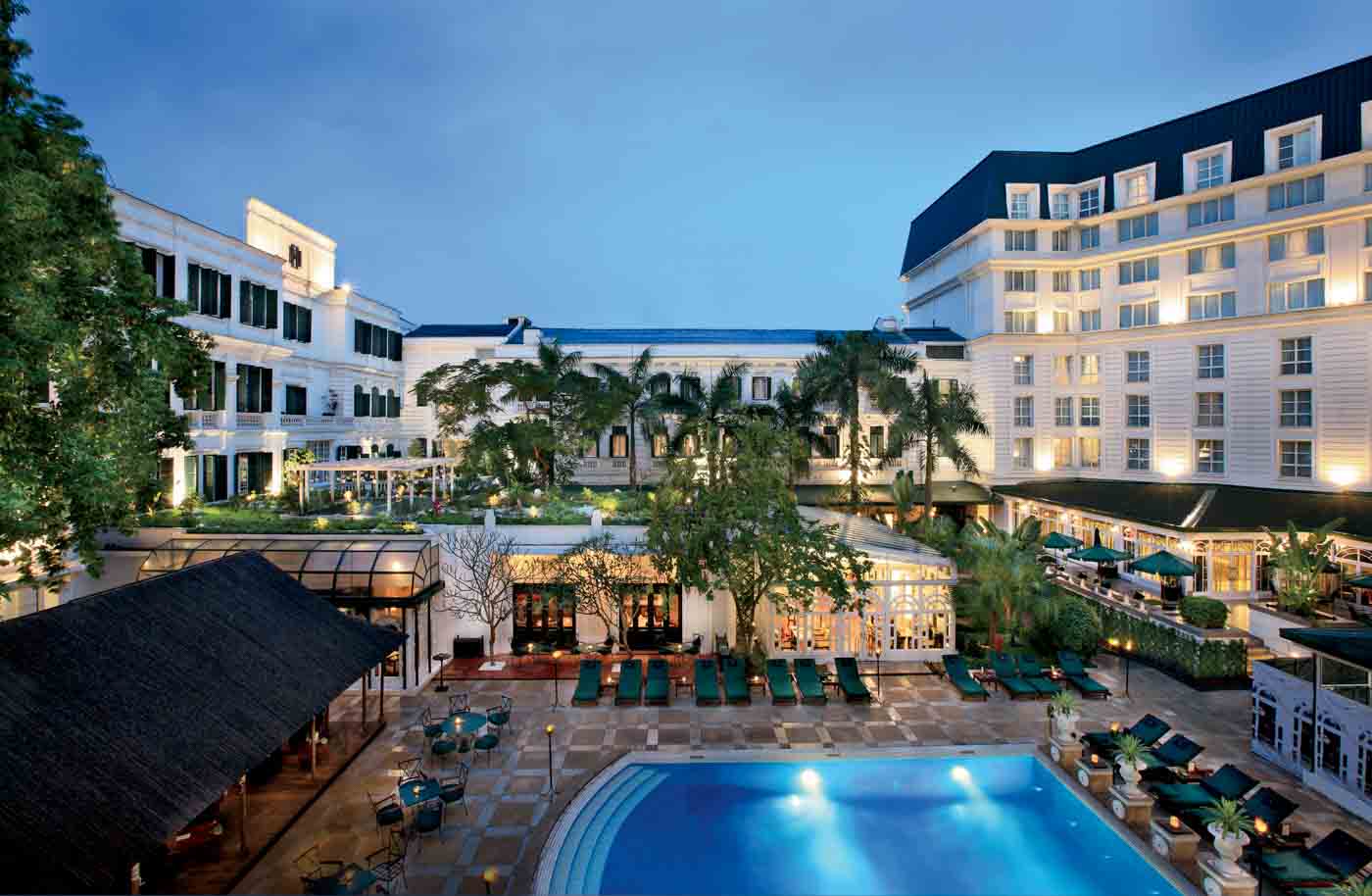
With more than 1,000 years of history, Hanoi holds a wealth of cultural treasures, including temples and ancient imperial citadels that I look forward to exploring on our next visit when we will be sure to spend more time. When we return, we will certainly stay at the luxurious and storied Sofitel Legend Metropole Hanoi—an experience that epitomizes the essence of hospitality and charm in Vietnam’s capital city.
Looking for a Southeast Asia sojourn? Follow this itinerary for a dream-like adventure through Vietnam’s diverse landscape.
For more information, visit anantara.com, sofitel-legend-metropole-hanoi.com.
Sign Up for the JWC Media Email